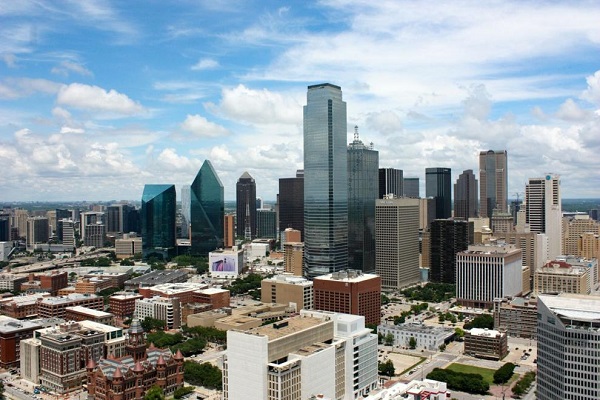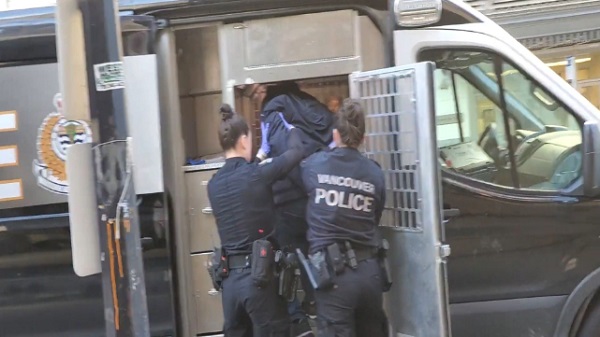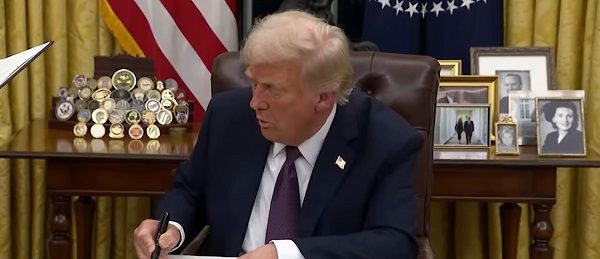COVID-19
COVID virus, vaccines are driving explosion in cancer, billionaire scientist tells Tucker Carlson

From LifeSiteNews
The spike protein from the COVID virus and shots cause persistent inflammation, which in turn suppresses the immune system, according to the accomplished Dr. Patrick Soon-Shiong.
A billionaire scientist and cancer drug inventor told Tucker Carlson that the COVID virus and mRNA “vaccine” are driving an explosion in cancer among the young and old alike.
Dr. Patrick Soon-Shiong, a transplant surgeon and owner of the Los Angeles Times, recently broke down in an interview how the COVID spike protein, persisting in people’s bodies both from the virus and the mRNA shots, is contributing to unprecedented cancer diagnoses.
Soon-Shiong likened the disturbing rise in atypical, aggressive cancer cases to a “non-infectious pandemic,” now claiming the lives of young people afflicted with cancers highly unusual for their age. He cited the fatal post-COVID case of a 13-year-old boy he had seen with pancreatic cancer usually found in people at least 45 to 50 years old.
He told Carlson how these cases were concerning him so much that he called a doctor friend whose experience mirrored his own. Soon-Shiong recounted how his friend told him, “Patrick, I’m now seeing an eight-year-old, a 10-year-old and 11-year-old with colon cancer … We’re seeing now 30-year-old, 40-year-old ladies, young ladies with ovarian cancer.”
Soon-Shiong explained that the challenge presented by cancer can be distilled into the question of how we can increase or activate the cancer killer cells and decrease or deactivate the cells that suppress the killer cells, which he called suppressor cells.
According to the doctor, what knocks these cells “out of equilibrium” is essentially inflammation.
A mechanism by which inflammation can help contribute to cancer is by flipping infection-killing neutrophils into suppressor cells, when the inflammation is “persistent,” according to Soon-Shiong.
Worse, after 50 years of scientific research and practice, he believes that “everything we’re doing” to address cancer “is tipping the scales towards the suppressor cells.”
To give context to the potential impact of COVID and its “vaccine,” he pointed out that there are cancer-causing viruses, called oncogenic, which persist in the body, thereby creating ongoing inflammation. COVID itself, as well as the mRNA shots created in response to the virus, both produce inflammatory spike proteins, he noted, which attach to blood vessels with ACE-2 receptors, found all throughout the body.
This would explain why after COVID, dysfunction in different organs — from the pancreas to the colon, and the heart to the brain — is being seen all of a sudden, Soon-Shiong continued. “You’ve seen young people have sudden heart attacks all of a sudden. You see young people with pancreatic cancer all of sudden. You see young people’s colon cancer all of a sudden.”
“So is it by coincidence that post COVID infection, post COVID vaccine, we’re seeing all these events where we know the spike protein goes? I don’t think so. I think it’s not a coincidence,” Soon-Shiong said. “So the question is, can we prove, is what I call long COVID virus persisting?”
“And the group at University of California, San Francisco, has now definitively proven that and published that in papers like Nature,” the doctor noted.
He said there is also published research showing that the persistence of the virus, which is likely the reason for “long COVID” symptoms, suppresses natural cancer-killer cells, making them “go to sleep.”
“And that’s why I sort of abandoned everything just to focus on how do we clear the virus, because the answer is to clear the virus from the body, the answer is to stop the inflammation,” Soon-Shiong said.
He has found that the virus persists in the body at least three to four years, and told Carlson he believes it cannot be cleared from a body that is immunosuppressed.
This accords with a Harvard study pointed to by the prolific internist and cardiologist Dr. Peter McCullough, which shows that those suffering from long COVID likely have spike protein from the virus circulating in their bloodstream.
However, according to medical freedom champion Dr. Mark Trozzi and other doctors, there are simple ways people can clear their body of the COVID virus (or shot’s) spike protein, to which Soon-Shiong himself attributes the illness caused by the virus.
Trozzi has shared three methods by which one can help clear out the spike protein and minimize its effects: Accelerating the process of autophagy through intermittent fasting; ingesting Nattokinase, which “digests” the spike protein; and taking substances that block the uptake of the spike protein, such as ivermectin and quercetin.
Soon-Shiong believes the only way to clear the body of the virus itself is to have a “T cell, natural killer (NK) cells,” (a type of T cell), which are white blood cells which kill cancer cells. He attributed the fact that he himself did not suffer from a COVID infection to the manipulation of his own immune system, through what he calls a “bioshield.”
What the bioshield does is “educate your body to have these T cells, called memory T cells, that go and hide in the bone marrow and come out when they need it and kill that cell,” Soon-Shiong said. He told Carlson it was approved for public use in the U.S. in 2024 for bladder cancer.
Asked how we can strengthen our immune system for disease in general, Soon-Shiong said we should seek to “activate” the natural killer cell. This immune cell can be replenished with sleep and exposure to sunlight and can be preserved by avoiding food that has an immunosuppressive effect. This means sticking to natural foods and avoiding processed foods with toxins, such as red dye, according to the doctor.
During his interview with Carlson, Soon-Shiong also discussed how his proposed interventions for COVID were shut down by the FDA, the efforts to find “dirt” on him to prevent him from becoming the head of the NIH, his thoughts on Robert F. Kennedy Jr., the healthcare establishment’s conflicts of interest, and why he decided to buy the Los Angeles Times.
Bruce Dowbiggin
The Covid 19 Disaster: When Do We Get The Apologies?

Breaking: Drs. Bonnie Henry and Theresa Tam have been appointed to the Order of Canada in recognition of their role in the country’s response to the COVID-19 pandemic.
And so the game of covid liar’s poker has more winners. It’s like awarding the captain of the Titanic the Nobel Prize for his work on floatation. As we now know these two— and the other WHO finger puppets in Canada— made the Covid 19 episode worse, not better, with their prescription for panic, positives and punishment. Even as they knew the truth about the limits of the virus and the efficacy of vaccines they continued to spew fallacious PCR data on the extent of the sickness and who was at risk.
Put simply, to protect vulnerable seniors they said kids were also at great risk. Which was unconscionable.
In this they encouraged Justin Trudeau in his worst instincts, combining his father’s insouciant disregard for civil rights (sending in the police) with his mother’s mental stability. Propped up by Team Tam and its U.S. allies such as Anthony Fauci, this hysteria peaked with a sequestered PM crushing the Truckers Convoy’s vaccine protest with emergency measures and destruction of civil liberties.
Lest you wonder, this overreach was recognized at the time. Justice Maclean wrote at the trial of Convoy organizers, “Defendants & other persons remain at liberty to engage in a peaceful, lawful & safe protest”. On Feb. 16, he continued a no-honking order, again writing: “Defendants & other persons remain at liberty to engage in a peaceful, lawful & safe protest.”
The leaders of the Convoy, lynched by Canadian media’s phoney claims of right-wing American interference, are still fighting jail time on charges of nuisance. While violent criminals are routinely released on bail or absolved.
Justice Richard Mosley later concluded that while the convoy was a disruption of public order, it didn’t constitute a national emergency and invoking the act “does not bear the hallmarks of reasonableness — justification, transparency and intelligibility.” But in real time Team Tam made no attempts to correct the wilder misgivings about Covid (lockdowns, mandatory vaccines). Trudeau was given a hall pass. Needless to say the purchased media made things infinitely worse regurgitating these mistakes.
In short, they knew better but hid the truth. But why pick on Henry and Tam? Under Trudeau and his wingman Jagmeet Singh this was the golden age of lies and prevarications in Canada and the U.S. No apologies were ever offered when the truth emerged.
As we’ve noted before, Trudeau cried with a teddy bear carefully positioned over 751 alleged unmarked graves in a known Catholic cemetery that the local Cowessess band abandoned. The Liberal government knew the claim of 215 “children’s graves” was false, and still ran with it to get Trudeau his photo-op. Naturally the CBC Media Party played (and still plays) accomplice in this farce as the Canadian flag was lowered to half-mast for six months and Trudeau ratted out Canada at the UN as a genocidal state.
There were more, plenty more Trudeau scandals that media endorsed and then stood by even as the truth was revealed. SNC Lavalin. We Charity. Arrive Can app. Firing indigenous justice minister. Chinese drug infiltration/ money laundering. Nazi Celebrated in Parliament. Welcome To Canada immigration. Nova Scotia massacre. McKinsey Consultation. Blackface. And so on.
And were there apologies when it came time to make the Trudeau Liberals accountable? No, they staged a media circus over Donald Trump’s assertion of 51st state. All the fake news and deliberate lies went poof, allowing Mark Carney to seamlessly assume the PM job.

Lest We Forget Pt. 2 it was not exclusive to Canada. As we are now learning: Barack Obama and Joe Biden sat in an August 3, 2016 Situation Room briefing and said, yeah, let the highest officials in our administration fabricate evidence to frame the opposing party candidate Donald Trump. Obama. Biden. Comey. McCabe. Strzok. Page. Rice. Etc.
Knowingly using the faked Clinton campaign ‘Steele Dossier’ hoax, they launched a federal investigation into the Trump presidential campaign that lasted three years after Trump was sworn in as the nation’s 45th President. Arresting and jailing his partners and colleagues. Inventing fake stories for their media enablers. Let’s repeat that. Saint Obama knew there was criminal activity in the process but let his henchmen try to fix an election.

And when the ruse was uncovered no one apologized. No one in authority was fired or jailed. The Pulitzer Prizes awarded to the NT Times and Washington Post for disseminating the DEMs scandal were not rescinded. Nor were they given back by the lying newspapers.
The concerted frauds of the same U.S. DOJ, FBI and State Departments were fed by media and accepted by gullible publics in Canada and America. The fantastical 2020 election results were likewise drummed into the public irrespective of the sudden “appearance” of 27 million new votes during a pandemic.
It was all a fitting preamble to the 2020-2024 Biden senility scandal with Democrats running a man they knew was in full dementia. In the 2020 election Biden was hidden from public view, the better to let media attack Trump for spurious charges launched by partisan DNC attorneys in Georgia, New York and DC. Even then it took the suppression of Hunter Biden’s incriminating laptop just prior to the election to get his father elected.

The dance of denial continued in Biden’s term as he physically and mentally deteriorated before the American public. But inquiries about who was running the government if not Biden were harshly suppressed. Media lackeys noted he was sharp as a tack mentally and in tip-top physical condition when he wasn’t falling down stairs.
It took the stunning 2024 debate debacle with Trump to strip away the lies about Biden’s health, now said to be advanced prostate cancer and Parkinson’s. The media, caught in their own lies about Biden’s condition, offered no apologies and tried to blame Biden’s stutter for the performance.. Right.
These were the two greatest U.S. hoaxes from people who’d cried hoax incessantly. They were hardly the only abuse of public trust. Some of the perpetrators are said to now be under investigation— even as they hand out awards to each other. The media’s credibility is shattered and yet they still blame others. Jaded voters are taking a “we’ll see” approach. But expectations of any change in DC or Ottawa are limited.
As Stephen Taylor posted on X: “Turns out for Liberals, ‘elbows up’ just means ‘noses up’ like it always has.”
Bruce Dowbiggin @dowbboy is the editor of Not The Public Broadcaster A two-time winner of the Gemini Award as Canada’s top television sports broadcaster, his new book Deal With It: The Trades That Stunned The NHL And Changed hockey is now available on Amazon. Inexact Science: The Six Most Compelling Draft Years In NHL History, his previous book with his son Evan, was voted the seventh-best professional hockey book of all time by bookauthority.org . His 2004 book Money Players was voted sixth best on the same list, and is available via brucedowbigginbooks.ca.
Freedom Convoy
Court Orders Bank Freezing Records in Freedom Convoy Case
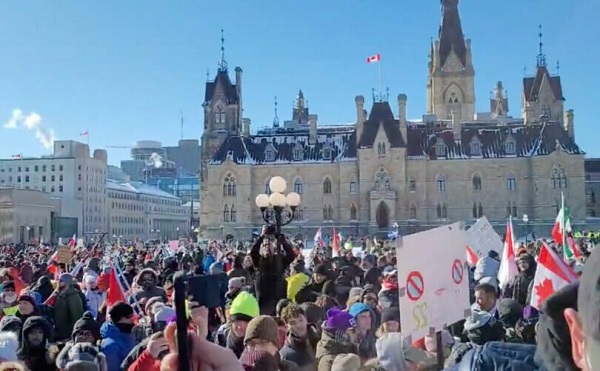
|
A Canadian court has ordered the release of documents that could shed light on how federal authorities and law enforcement worked together to freeze the bank accounts of a protester involved in the Freedom Convoy.
Both the RCMP and TD Bank are now required to provide records related to Evan Blackman, who took part in the 2022 demonstrations and had his accounts frozen despite not being convicted of any crime at the time.
The Justice Centre for Constitutional Freedoms (JCCF) announced the Ontario Court of Justice ruling. The organization is representing Blackman, whose legal team argues that the actions taken against him amounted to a serious abuse of power.
“The freezing of Mr. Blackman’s bank accounts was an extreme overreach on the part of the police and the federal government,” said his lawyer, Chris Fleury. “These records will hopefully reveal exactly how and why Mr. Blackman’s accounts [were] frozen.”
Blackman was arrested during the mass protests in Ottawa, which drew thousands of Canadians opposed to vaccine mandates and other pandemic-era restrictions.
Although he faced charges of mischief and obstructing police, those charges were dismissed in October due to a lack of evidence. Despite this, prosecutors have appealed, and a trial is set to begin on August 14.
At the height of the protests, TD Bank froze three of Blackman’s accounts following government orders issued under the Emergencies Act. Then-Prime Minister Justin Trudeau had invoked the act to grant his government broad powers to disrupt the protest movement, including the unprecedented use of financial institutions to penalize individuals for their support or participation.
In 2024, a Federal Court Justice ruled that Trudeau’s decision to invoke the act had not been justified.
Blackman’s legal team plans to use the newly released records to demonstrate the extent of government intrusion into personal freedoms.
According to the JCCF, this case may be the first in Canada where a criminal trial includes a Charter challenge over the freezing of personal bank accounts under emergency legislation.
|
-

 Alberta2 days ago
Alberta2 days agoAlberta school boards required to meet new standards for school library materials with regard to sexual content
-
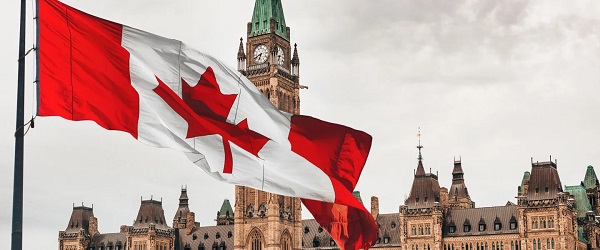
 Business2 days ago
Business2 days agoCarney government should recognize that private sector drives Canada’s economy
-

 Alberta2 days ago
Alberta2 days agoFourteen regional advisory councils will shape health care planning and delivery in Alberta
-

 Environment1 day ago
Environment1 day agoEPA releases report on chemtrails, climate manipulation
-

 Bruce Dowbiggin2 days ago
Bruce Dowbiggin2 days agoThe Covid 19 Disaster: When Do We Get The Apologies?
-
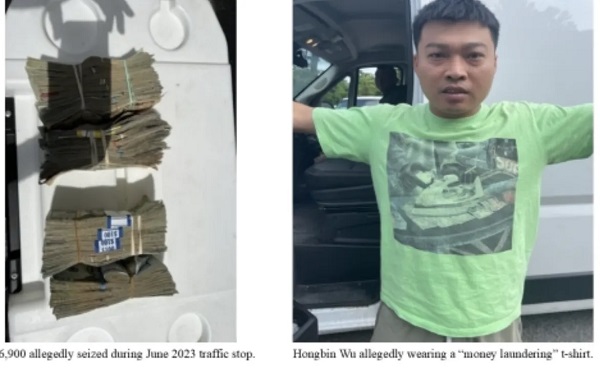
 Crime1 day ago
Crime1 day agoSweeping Boston Indictment Points to Vast Chinese Narco-Smuggling and Illegal Alien Labor Plot via Mexican Border
-

 Business20 hours ago
Business20 hours agoCBC six-figure salaries soar
-

 Business2 days ago
Business2 days agoCannabis Legalization Is Starting to Look Like a Really Dumb Idea

